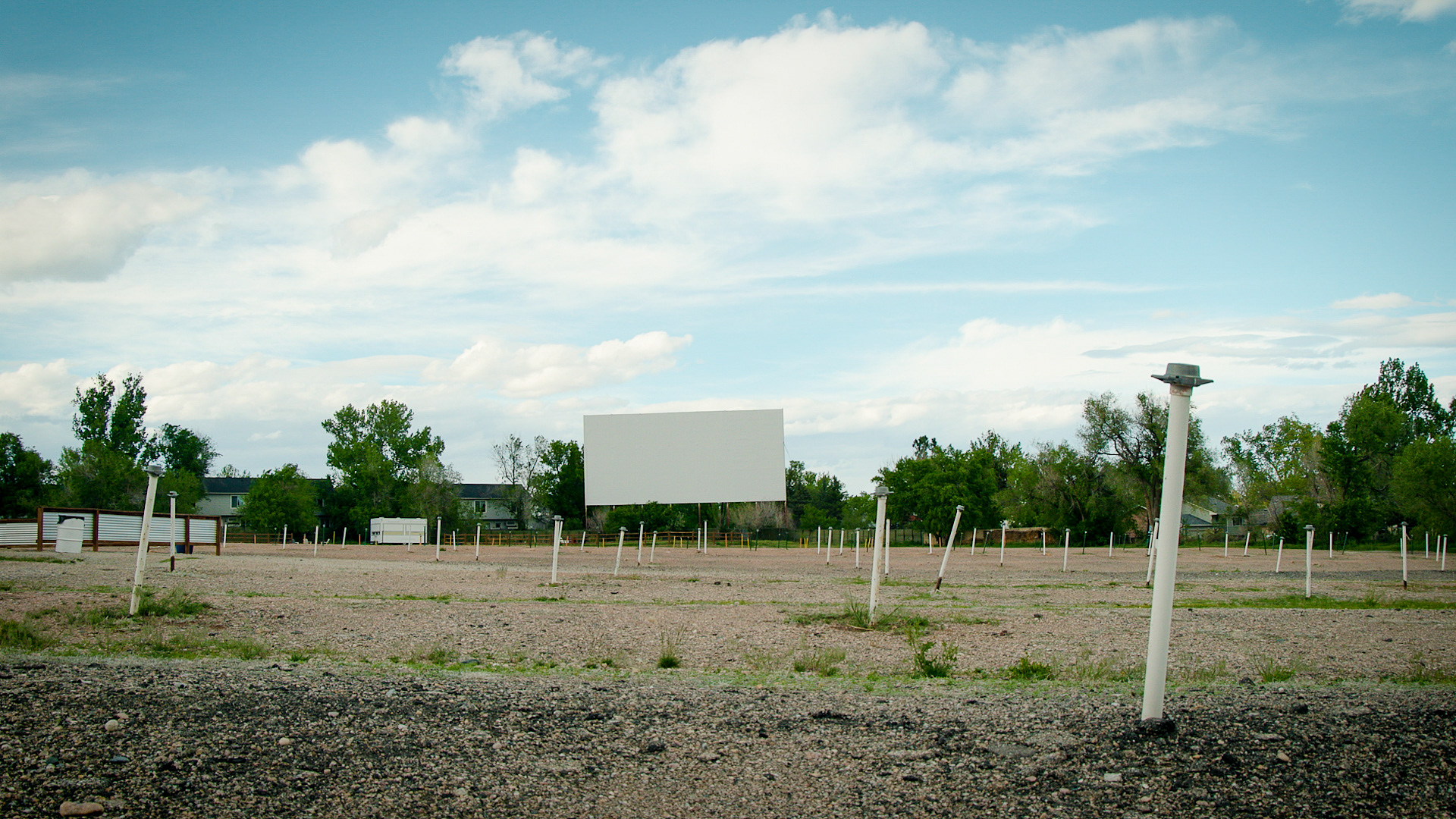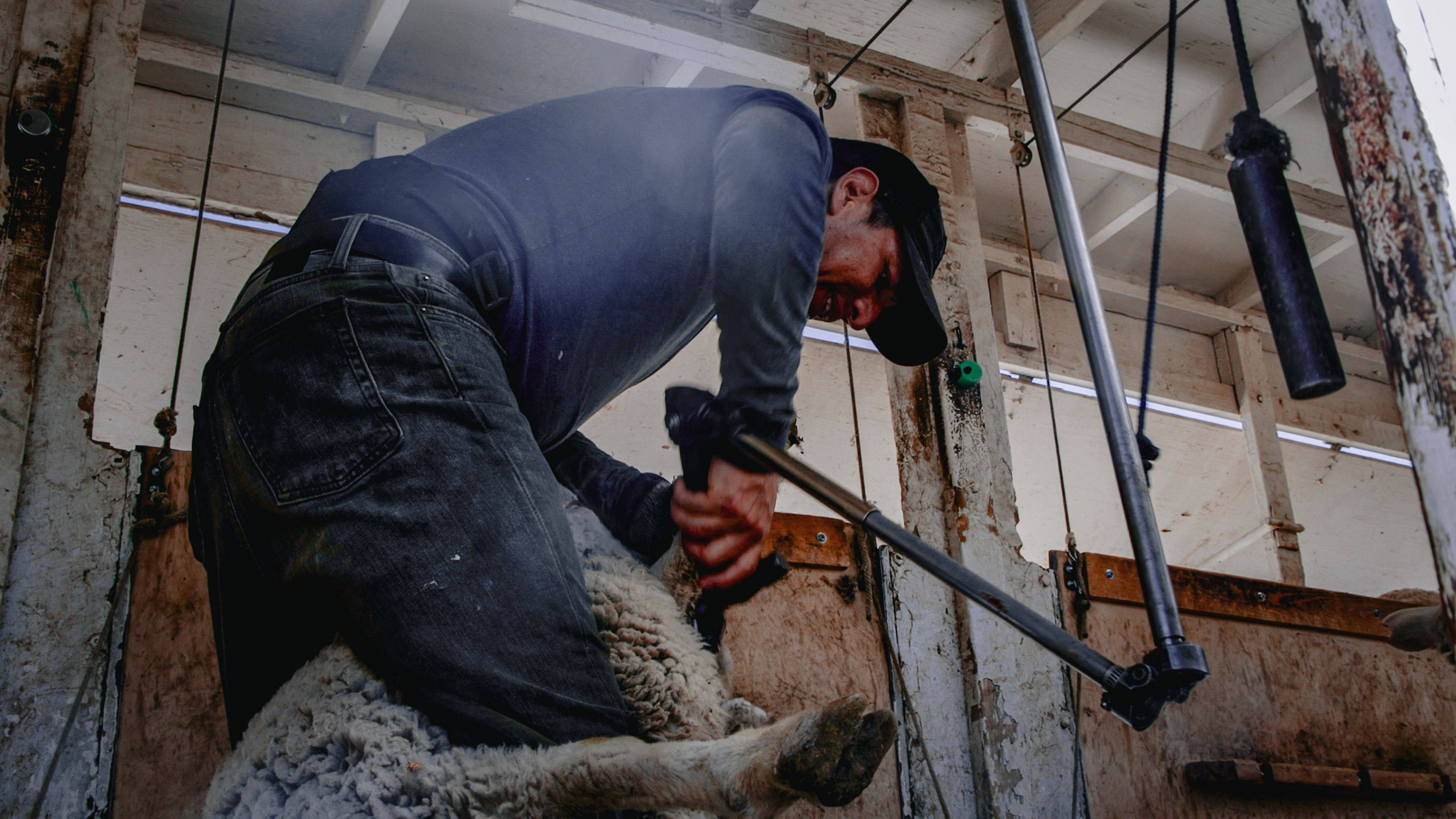Despite the intractability of the problem, wildlife biologists manage and track bighorns as best they can. During a recent field operation at the end of December, Woodward planned to dart and collar a bighorn ewe so that his team can better understand the herd’s movements and behavior.
At the base of the Pikeview Quarry, Woodward and his colleague Corey Adler prepared a carbon-dioxide tranquilizer gun they use to dart the sheep. They must get within 25 to 30 yards for a good shot.
Once the sheep is tranquilized, they secure a GPS tracking collar. Location data from collars help CPW understand bighorn sheep movement and population health. When a collared sheep dies, biologists are more likely to find its body in time to collect tissue samples that scientists can study.
Although the Rampart herd is currently disease-free, CPW regularly monitors the population to ensure it remains healthy. They use this herd to create new herds and bolster ailing herds around the state.
The herd at Pikeview Quarry descended from 14 bighorn sheep that were originally destined for Pike Peak. In 1946, a truck carrying the sheep broke down. The drivers released the sheep near Green Mountain Falls thinking they would make their way towards Pikes Peak, instead, the herd colonized a series of canyons and rocky slopes above the Garden of the Gods.
It didn’t take long for bighorn sheep to become a fixture in the area.
Jerry Schnabel, the president of Castle Aggregates, which operated Pikeview Quarry, said that even rough and tough miners soon developed a soft spot for sheep. Miners with names like “Dozer Dave” would haul water to the top of the quarry to help the sheep survive dry spells, he said.
Schnabel even found invoices for hay the miners had ordered from a local rancher to feed the bighorns.
To this day, the peri-urban herd provides easy access for citizens and scientists to observe the species.
Adler and Woodward piled into an off-road vehicle to make the initial ascent up the quarry on a recent research trip. Although the bighorn sheep here have grown accustomed to heavy machinery, they remain highly attuned to predators.
Near the top of the quarry, they parked and continued on foot. The wind carried their scent towards the sheep, but Woodward and Adler thought that if they stayed hidden behind an outcrop, then army-crawled into position, they would be close enough to take a shot.
At the base of the quarry, Brandon Bacon, a terrestrial wildlife technician, tracked the sheep through a spotting scope.
Woodward grew up in Lamar, Colorado. He remembers fishing trips with his grandmother and summers spent catching lizards and snakes. It wasn’t until college, when he worked as a technician for Colorado Parks and Wildlife, that he fell in love with ecology.
“I was a history major until I learned this was a job,” said Woodward.
He and Adler tiptoed through a patch of old snow.
The gun was loaded. The sheep were fewer than a hundred yards away.
Suddenly, a ewe lifted her head. She sniffed the air then paused. The men hunkered at the back of the terrace until the sheep returned to their food.
Woodward and Adler crept along the edge towards a boulder right above the sheep.
But the radio crackled.
“They bolted,” said Bacon.
The sheep bounded up a shelf at the south end of the quarry. They raced into a grove of standing dead trees. They were gone.
“Even though they act a little more accepting towards humans, they're still wild animals, and they're going to do wild things,” said Woodward.
Across the state, winter offers the best window for bighorn sheep research when herds descend to more accessible terrain and cooler weather makes it safer for biologists to handle the animals without harming them.
In addition to ground missions, like the one at Pikeview Quarry, CPW uses small planes and helicopters to conduct annual surveys of bighorn sheep populations. These data help biologists adjust the number of hunting licenses and understand where disease conflicts may exist.
One of the problems researchers face in addressing respiratory diseases is that by the time a disease outbreak becomes apparent, it can be too late to take action. Because bighorn sheep are often visible throughout the Front Range, it’s easy for people to assume that the species is thriving, said Meyers.
“The animals are really good at hiding what's going on so that they don't show signs of weakness to predators,” said Karen Fox, a veterinary pathologist and research scientist at Colorado State University.
“But when I get them on the necropsy floor and I open them up, I find the lesions. Some of these animals are so badly affected that they are coughing. They have mucus pouring out of their noses.”
At times, disease outbreaks have dramatic outcomes, like the Trickle Mountain die-off. Between 1992 and 1993, pneumonia reduced the Saguache County population from 400 bighorn sheep to 200. By 2010, the Trickle Mountain herd had just 35 sheep left.
More recently, disease die-offs have taken a more imperceptible form, striking lambs and leading to a slow decline in a herd’s numbers.
“It's kind of an evil irony. Each year the lambs will be born and the lambs look perfectly healthy. They're sprite. There's a good number of lambs per ewe. As the summer progresses, though, and we get closer and closer to fall, you'll start noticing fewer and fewer lambs with the ewe, and then eventually, we start observing sick lambs on the landscape. It’s heartbreaking,” said Woodward.
Biologists have traced the current die-off among the Pikes Peak bighorn herd to an incident in 2021 when domestic sheep escaped from a small-scale “hobby” farm. Hunters alerted CPW. When they found the domestic sheep, they were corralled in a canyon that happens to be a primary migration corridor for the area’s bighorns.
“It couldn't have been at a worse time of year. It was right at the beginning of the lambing period, in which those sheep were moving down from Pikes Peak into their lambing area, at the end of this canyon,” said Woodward.
CPW tracked the bighorn lambs born that year.By November, they had observed 16 ewes without lambs.
“We knew at that point that we were seeing a pneumonia related die-off,” said Woodward.
Since then, he and fellow researchers have observed other sick lambs on the peak.
“It’s not easy to watch,” he said, describing the cough as “guttural.”
“You could see it in their stomach. You could see all their muscles contracting. It has a very distinct sound, almost like a metal can being rattled with rocks inside.”









